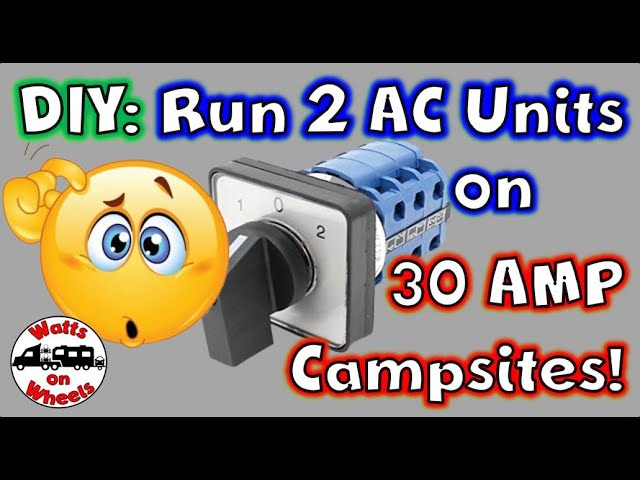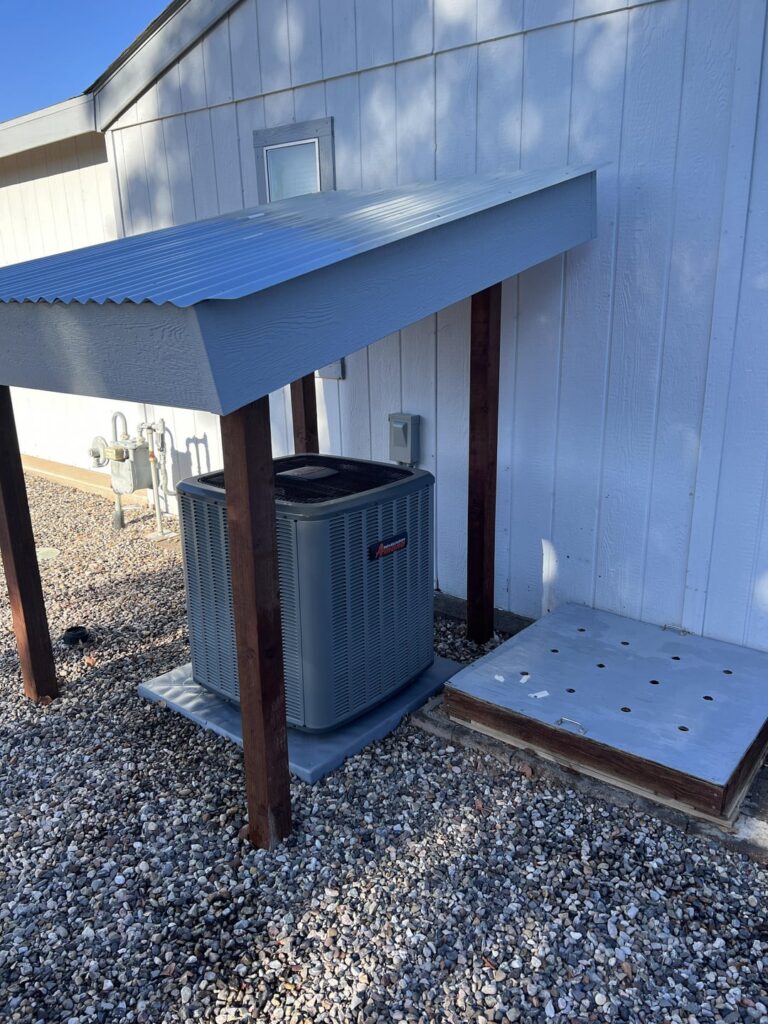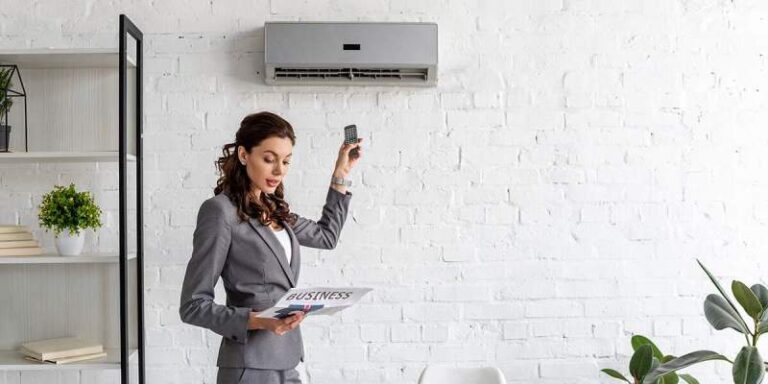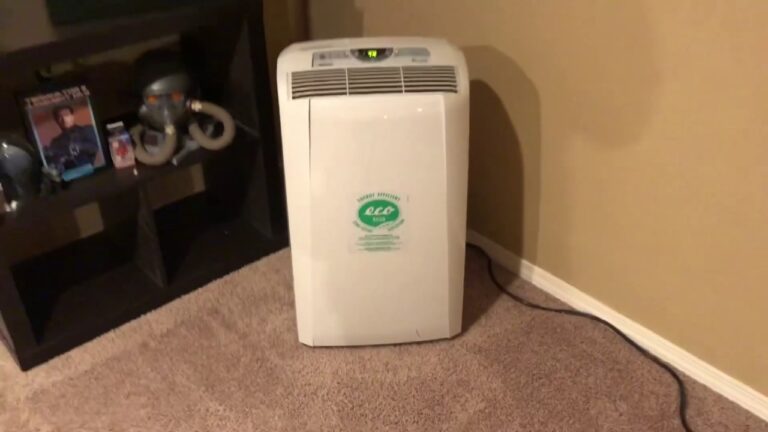Can I Run My RV AC on 30 Amp: Essential Tips and Advice
Yes, you can run your RV AC on a 30 amp service. Ensure your AC unit’s power requirements match the 30 amp capacity.
Running an RV air conditioner on a 30 amp service is feasible for most units. Modern RV air conditioners are designed to operate efficiently on this power supply. It’s crucial to verify your AC unit’s wattage and power demands to avoid tripping the breaker.
Overloading the circuit can lead to power issues and potential damage. Balancing your RV’s electrical load is essential, especially when running multiple appliances. Managing your energy usage helps maintain a steady and reliable power supply. Proper planning ensures a comfortable and hassle-free RV experience.

Credit: www.youtube.com
RV Electrical Basics
Understanding your RV’s electrical system is crucial. It keeps your appliances running smoothly. Knowing how much power your RV needs helps prevent issues. Let’s dive into some key concepts.
Understanding Amps And Volts
Amps measure the flow of electricity. Think of amps as the amount of water flowing through a hose. Volts measure the pressure pushing that flow. Together, they determine how much power your RV uses.
For example, most RVs use a combination of 12-volt and 120-volt systems. The 12-volt system powers lights, fans, and some appliances. The 120-volt system powers larger appliances, like your air conditioner.
Common RV Electrical Systems
There are two main types of RV electrical hookups: 30-amp and 50-amp. A 30-amp hookup provides 3,600 watts of power. This is usually enough for smaller RVs. A 50-amp hookup provides 12,000 watts, suitable for larger RVs.
Here’s a table showing the differences:
| Feature | 30-Amp System | 50-Amp System |
|---|---|---|
| Power (Watts) | 3,600 | 12,000 |
| Number of Prongs | 3 | 4 |
| Common Usage | Small to Medium RVs | Large RVs |
Understanding these basics helps you manage your RV’s power needs. It also ensures your appliances work efficiently. Always check your RV’s power requirements before plugging in.
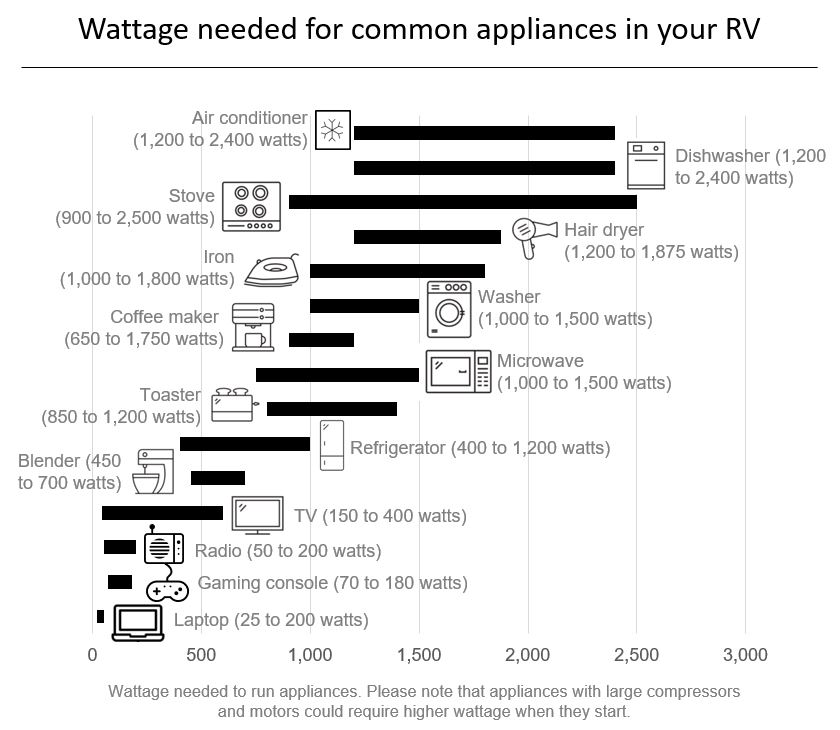
Credit: www.cummins.com
30 Amp Vs. 50 Amp Service
Are you wondering if you can run your RV AC on a 30 amp service? Understanding the difference between 30 amp and 50 amp services is crucial. This knowledge helps you manage your RV’s power needs efficiently.
Differences In Power Capacity
The main difference between 30 amp and 50 amp services is power capacity. A 30 amp service provides up to 3,600 watts of power. In contrast, a 50 amp service offers up to 12,000 watts of power. This substantial difference affects which appliances you can run simultaneously.
Here’s a quick comparison in table format:
| Service Type | Max Power (Watts) |
|---|---|
| 30 Amp | 3,600 |
| 50 Amp | 12,000 |
Pros And Cons
Choosing between 30 amp and 50 amp services comes with pros and cons. Let’s break them down:
- 30 Amp Pros:
- Less expensive wiring and installation.
- Suitable for smaller RVs.
- 30 Amp Cons:
- Limited power capacity.
- Cannot run multiple high-power appliances.
- 50 Amp Pros:
- Higher power capacity.
- Can run multiple appliances simultaneously.
- 50 Amp Cons:
- More expensive wiring and installation.
- May not be necessary for smaller RVs.
Understanding these differences helps you make an informed decision. Choose the right service for your RV’s needs.
Ac Power Requirements
Running your RV air conditioner on a 30 amp service is possible. Understanding the power requirements of your AC unit helps ensure smooth operation. Let’s dive into the details.
Typical RV AC Units
Most RVs come with an air conditioning unit rated at 13,500 BTUs or 15,000 BTUs. These units are common and usually found in modern RVs. Some smaller RVs might have a 9,000 BTU unit. Knowing your unit’s BTU rating is crucial for power management.
Power Consumption
An RV air conditioner consumes a significant amount of power. For example, a 13,500 BTU unit typically requires around 1,500 watts to start and about 1,000 to 1,200 watts to run. A 15,000 BTU unit needs more power, often starting at 2,000 watts and running at about 1,500 watts.
| AC Unit Size | Start-Up Power (Watts) | Running Power (Watts) |
|---|---|---|
| 9,000 BTUs | 1,200 | 900 |
| 13,500 BTUs | 1,500 | 1,200 |
| 15,000 BTUs | 2,000 | 1,500 |
Using a 30 amp service means you have a total of 3,600 watts available. Running your AC unit requires careful management of other electrical devices. Here are some tips:
- Turn off other high-power devices when using the AC.
- Consider using LED lights to save power.
- Use a power management system for efficient energy use.
Properly managing your RV’s power ensures a comfortable and cool environment.
Running AC On 30 Amp
Running your RV air conditioner on a 30 amp service can be a concern. Many RV owners wonder about its feasibility and potential limitations. Let’s explore the possibilities and practical tips for running your AC on a 30 amp service.
Feasibility And Limitations
Running an RV AC on a 30 amp service is possible. But there are limitations. A typical RV air conditioner uses a lot of power. A 30 amp service provides 3,600 watts (30 amps x 120 volts). If your AC unit needs 2,000 watts, you have 1,600 watts left for other devices.
It’s important to manage your power usage carefully. Running multiple high-wattage devices together can trip the breaker. Ensure you understand your RV’s electrical needs. Consider what other appliances you might need to run.
| Device | Average Wattage |
|---|---|
| RV Air Conditioner | 2,000 – 3,000 watts |
| Microwave | 1,000 – 1,500 watts |
| Fridge | 400 – 600 watts |
| Lights | 50 – 200 watts |
Practical Tips
- Monitor your power usage: Use a power management system to track your usage.
- Stagger appliance use: Avoid running multiple high-wattage devices at the same time.
- Use energy-efficient devices: Opt for LED lights and energy-saving appliances.
- Turn off unused devices: Unplug devices when not in use to save power.
Following these practical tips can help you run your RV AC smoothly on a 30 amp service. Proper management ensures you stay cool without tripping breakers.
Load Management
Managing the load on your RV’s 30 amp system is crucial. Proper load management ensures you can use your air conditioner without tripping the breaker.
Balancing Power Usage
Balancing power usage in your RV is very important. A 30 amp system can handle up to 3,600 watts. Your air conditioner uses a lot of power. To avoid overloading, balance other appliances.
- Turn off non-essential devices.
- Use energy-efficient appliances.
- Monitor your power usage regularly.
Keep a list of your appliances and their wattage:
| Appliance | Wattage |
|---|---|
| Air Conditioner | 1,500 – 2,000 watts |
| Microwave | 800 – 1,200 watts |
| Refrigerator | 600 – 800 watts |
Essential Appliances Only
Run only the essential appliances when using the air conditioner. This helps in managing the load better.
- Air Conditioner
- Refrigerator
- Lights
Unplug or turn off high-wattage items like:
- Microwave
- Electric Heater
- Hair Dryer
By focusing on essential appliances, you can run your RV AC smoothly.
Power Monitoring Tools
Using power monitoring tools is essential for running your RV AC on 30 amp. These tools help track power usage and prevent overloads. They ensure your AC runs smoothly without tripping the breaker.
Useful Gadgets
Several gadgets can help you monitor power usage:
- Surge Protectors: These protect your RV from power surges. They also show real-time power usage.
- Energy Management Systems (EMS): EMS monitors and manages the power distribution in your RV. It helps prevent overloads.
- Voltage Meters: These display the voltage level. Keeping an eye on voltage ensures your AC operates within safe limits.
Installation Tips
Installing power monitoring tools can be simple. Follow these tips for a smooth installation:
- Read the Manual: Always read the manual before starting. It provides specific instructions for your device.
- Turn Off Power: Ensure the power is off before installation. This prevents electrical shocks.
- Use Proper Tools: Use the right tools for the job. This makes installation easier and safer.
- Test the System: After installation, test the system. Ensure everything works correctly.
| Gadget | Function |
|---|---|
| Surge Protector | Protects from surges and shows power usage |
| EMS | Manages power distribution and prevents overloads |
| Voltage Meter | Displays voltage levels |
Safety Considerations
Running your RV AC on a 30 amp service requires careful attention to safety. Understanding the safety considerations will help you avoid potential risks and ensure your AC runs efficiently.
Avoiding Overloads
Avoiding overloads is crucial when using a 30 amp service for your RV AC. Your RV’s electrical system has a limited capacity. Overloading can trip breakers or cause damage.
- Monitor your power usage. Use devices to track real-time consumption.
- Turn off non-essential appliances. This frees up power for your AC.
- Check for signs of overload. Dim lights or tripped breakers can indicate problems.
Avoiding overloads helps maintain a stable power supply. It also protects your RV’s electrical components.
Proper Wiring
Proper wiring ensures the safe operation of your RV AC on a 30 amp service. Faulty wiring can lead to electrical hazards.
| Aspect | Importance |
|---|---|
| Wire Gauge | Use the correct gauge to handle 30 amps. |
| Connections | Ensure all connections are secure and tight. |
| Inspection | Regularly inspect wires for wear and damage. |
Using the correct wire gauge and secure connections is essential. Regular inspections help identify potential issues early.
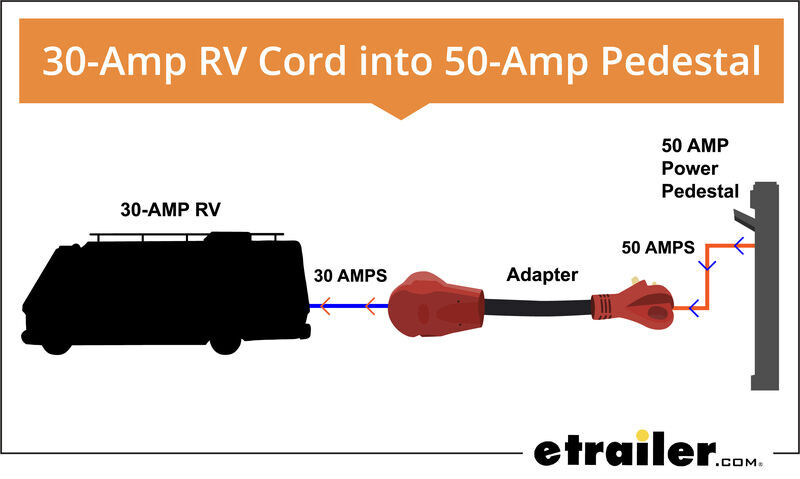
Credit: www.etrailer.com
Alternative Cooling Solutions
Exploring alternative cooling solutions for your RV can be effective. You can keep your RV cool without relying solely on the AC. Discover various methods that save energy and keep you comfortable.
Portable Ac Units
Portable AC units are a great alternative for RV cooling. They are easy to install and move around. These units can run on a 30 amp system without overloading it.
- Compact and lightweight
- Energy-efficient
- Easy to set up
Many portable AC units also come with dehumidifiers. This feature helps in maintaining optimal humidity levels inside your RV.
Energy-efficient Fans
Energy-efficient fans are another excellent choice for cooling your RV. They consume less power and provide effective air circulation. These fans can be used in combination with other cooling methods.
- Low power consumption
- High air circulation
- Portable and versatile
Using energy-efficient fans can significantly reduce your energy usage. Pair them with reflective window covers for best results.
| Cooling Solution | Benefits |
|---|---|
| Portable AC Units | Compact, Energy-efficient, Easy to set up |
| Energy-Efficient Fans | Low power consumption, High air circulation, Portable |
Frequently Asked Questions
Can You Run An Rv Air Conditioner On 30 Amps?
Yes, you can run an RV air conditioner on 30 amps. Ensure other appliances are off to avoid overloading.
What Can I Run On 30 Amp In My Rv?
You can run essential appliances like the air conditioner, microwave, TV, fridge, and lights on a 30 amp RV circuit.
How Many Amps Do You Need To Run A RV Air Conditioner?
An RV air conditioner typically requires 15 to 20 amps to run. Check your unit’s specifications for exact requirements.
Conclusion
Running your RV AC on a 30 amp service is possible with proper management. Limit other appliances to avoid tripping breakers. Regular maintenance ensures efficient operation. Always monitor your power usage to prevent overloading. Enjoy cool, comfortable travels without worrying about electrical issues.
Happy RVing!

